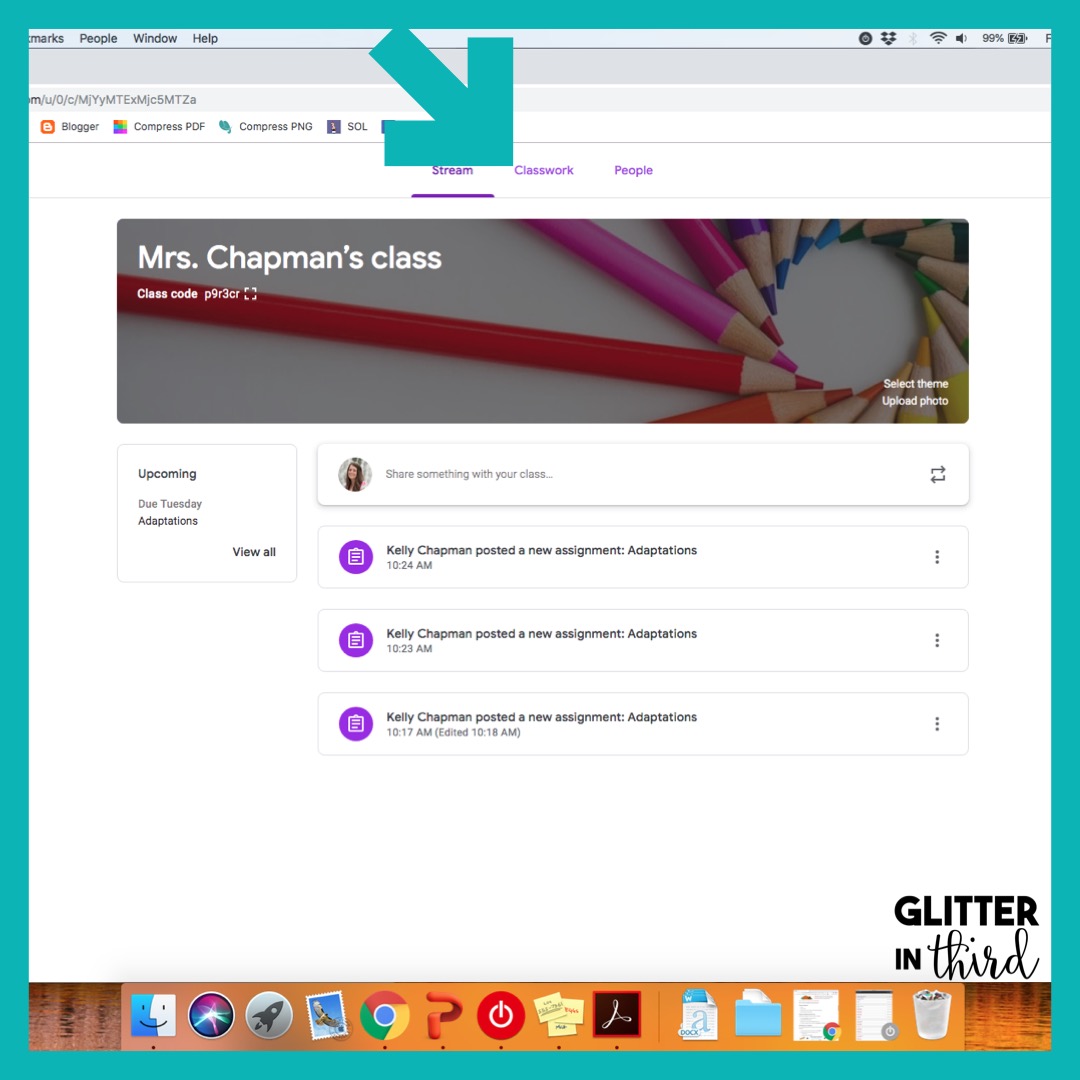Online School Issues
Published on October 1st, 2020 - Edited on October 25th, 2020
A break from physically attending school is typically viewed as a pause on work, to then resume once the school reopens. However, the COVID-19 pandemic has made it unclear when schools can reopen physically and we cannot possibly take a break for some reason. As such, we need an alternative where we could learn while still maintaining a distance from one another. The current solution is video conferences to attend specific classes at a specific time, which is what was done when we were in person. However, why keep to such an outdated system in a digital world that clearly does not need this?
Schools generally do not like change, and during these risky times, change could have a major impact on how the student can learn. Besides, with plans for a vaccine to come out really soon, is it that worth it to change what already works? But here’s the thing; it does not work. There are severe issues when it comes to adapting a student-life into a kid’s personal life. Administration does not know what stays behind closed doors, and unfortunately, students are weary of telling staff what goes on at home. However, staying behind those closed doors won’t make a change; rather, describing the issues and taking this issue hands on will. Just because it’s better than going to meet in person and getting everyone sick doesn’t mean we have to love what we get. We’re allowed to complain, and as long as these protests are peaceful, I see no reason why we cannot raise our voices to point out the issues with the current way of distanced learning.
Global Services
Whether it’s Zoom, Microsoft Teams, Google Speaks or whatever public service they use, it seems as if all schools are sticking to the tech giants due to peer recommendation. Normally, I applaud trying to limit your options to what works, what doesn’t and what everyone else is picking. However, when you take bandwidth, server strain and independence into account, you could start to see why it’s an issue. Allocating everyone into one basket means that security breaches are a much bigger deal than what would normally be if everyone spaced out, which is exactly what happened with Zoom back in May 2017.
“So what? It’s just zoom that got compromised. It’s not like anyone sticks to it”
Yes, it’s just Zoom for smart guys who use different passwords for different services or use a password manager. However, the average market that Zoom appeals too (which, ironically enough, was no one before COVID-19) have really bad memory when it comes to passwords. Reusing passwords is common for folks like them. The issue then grows from just Zoom to Facebook, Gmail and worse of all; your bank account. Now multiply that number from one person with the compromised account to all the peer-recommendations. The bigger a service grows, so does the hackers attention on it.
Now, yeah, this applies to everything really, but there are other issues in regards to server handling. As a general policy when it comes to bandwidth, servers have difficulty processing multiple requests being thrown at the same time. Include the entire world, and your servers must really be shaped to handle this kind of activity. Of course, as alternatives grew, some schools switched over, but back in April 2020, Zoom had major issues keeping up with the entire world. The zoom downtimes just proved one thing; we’re using centralized services that we have no control over.
These schools get funding for large scale building repairs, College Board makes over 1 billion dollars (yet they call themselves a non profit organization 😂) and yet, they can’t afford to host their own systems? It’s so easy to find a self-hostable alternative to Zoom and use that. Heck, my friend Evie hosted an entire chat platform on his Pi, which comes to show just how little demanding these platforms are. If you don’t want to shell out money on a VPS, you could just buy your own cheap laptop, set up the platform and portforward your IP so that everyone can connect.
Fast-internet access (or rather the lack-thereof)
Now that uptime relies purely on whether the school building’s electricity is available in time for class and not if someone completely outside your life decided to try and DDOS a global service, it’s time for the students to connect to the video conference platform you just set up. How is that going to work, when rural communities do not have access in the slightest to fast WiFi? Fiber is a game changer, yet that isn’t available to most rural areas.

Take Oklahoma for example. A GBAtemp user named sks316 lives there and for the longest time, it’s been really difficult for them to even stream basic youtube videos. With an upload speed of 0.88 mbps, I highly doubt she would have been able to even log onto Zoom, with how bloated their software is. Yet, her family paid $65 for speeds like this, so how could we expect low-income families to come to school every day using lesser wifi (if they could even afford WiFi in the first place)?

If you don’t like this comparison about Oklahoma, then let’s take a look at Australia. How is it that in 2014, having a 2.66 Mbps upload speed is faster than 69% of the general population? Fiber literally just got announced on September 23rd, 2020 for Australian users, so for it to actually be usable would take quite a while. By that point, I’m sure we all would have come back to inperson schooling.
Connection Issues (Technological-wise and otherwise)
Even if we do manage to get people connected in the first place, it’s quite difficult to keep everyone in class, whether there are technological issues or life in general. These aren’t uncommon; people assume that just because you’re working from home means that you are now available 24/7. Whether it’s to bring in groceries from the car, taking care of a younger sibling, speaking to others on the phone, people have to do other things because they’re in an environment that needs them. In school, your parents are (hopefully) not in the building and as such, wouldn’t ask you these dumb questions.
However, even if you’re in a proper work mindset, that doesn’t mean that nature cannot interfere. Electricity issues happen all the time. In fact, earlier this school year, we had a power outage for an entire hour where I lived, due to wildfires started by a Gender Reveal party. I didn’t have class that day, but if it were a school day, I would have gotten disconnected. Schools treat leaving class early worse than not coming to class at all, giving straight up 0s for participation and what is basically a record of anything the student has done wrong.
Notice how it only lasted an hour? That’s because I live in a more populated area, where people would riot if the electricity were down for more than two hours. In urban places in New York? I stayed there for 5 days, and only one of those days we had power. Clearly we’re trying to devote our time and money (because fast internet required by these video conference platforms costs money) to school, yet we can’t even use it in the end.
Is video-conferencing needed?
We got every kid a high speed internet, made our own reliable video conferencing service, told nature to not cancel our our electricity flow and now log onto Zoom. What happens now? Do things we could easily do on our own? There are only two reasons I see video-based classes being used: Classes that need teacher-student interaction and for teachers to arbitrarily control students.
I do not have any issues with video-conferences being used for classes that need it. Learning new languages without any history or how to master an instrument; it needs the hands-on experience. However, why do math classes need to be on Zoom? All these classes do is just read the fine-print of the book, copy the examples from the book, do the work from the book and then just hand in that blank piece of paper. There does not need to be hands-on student-teacher interaction when the teacher either way just profits off work he never made. The reason? Control.
For example, my English teacher was attempting to stream a movie called Boys State over Zoom, which resulted in a massive frame drop that made me physically unable to watch the movie. I had 3 assignments on what was talked about in the movie, but the concequence of not doing the assignment (getting 0s) was not too grand to consider going through serious physical pain just to watch a movie about politics. As if I needed more reminding that politics isn’t anything but comedy and fighting. Thank you Donald Trump, Mike Wallace and Joe Biden. It didn’t even matter in the end, since he either way uploaded the clips to Google Classroom afterwards, so what was the point of forcing us to watch it in class? My teacher might end up reading this, and I might be in serious trouble for saying this, but I consider it to be about control.
If he could guarantee we were on the Zoom room while the movie was streaming, we would have no excuse not to watch.
- We couldn’t say “hadn’t had time” since we had a time slot.
- We couldn’t say “couldn’t see the stream” since we had a local copy uploaded.
For those of you curious, I’m still not watching the Google Classroom clips. They were using Zoom’s recording software which records the sent packets to the server rather than the hosts screen directly.
There is no substancial reason why we have to wear proper school uniform and atire when we are at the confort of our home. There is no one to impress other than “hey, we just love turning these students into robots that are unable to be comfortable”. There is no reason why we cannot look away for literally a second without the teacher barking at us to stay focused. It is just about control, and I think this pandemic has finally exposed what schools are there for; not to educate these students into mastering these subjects but to develop these students into following tradition. That’s why they do not allow you to look at notes on tests; because their olden-day jobs require you to memorize everything. As a programmer, I can safely say that no programmer would remember every single detail of the language that they would master. This is why we have documentations.
Of course, there could be reasons why we have to use video-conferencing that I am just unaware of. To any school director, please feel free to contact me. I would love to hear a proper response to why we need in-person classes in a world that can do without it. High School kids can figure out things on their own without spoon-feeding. We fully recognize that if we don’t do something, we’d suffer the consequences. If we need help, we could very easily send over a video recording of what we need help with, or setup optional meetings, where students can tune in on their own, rather than forced seeings every day.
Potential Solutions
Say we negated video conferencing altogether. That’s great, but how would we get the material? There would need to be a way where the teacher does not have to be there in person-form but still deliver the content. However, that’s still too vague and not really explicit on how to teach the material successfully to the student.
- Take the in-person style and place it on a website with forced watching of pre-recorded clips
In a real classroom, when you are tied to meeting in person, you must listen to what he has to say. However, in this digital world, you don't need to have any of those chains. *So why keep them?* This is what a global platform titled Edgenuity tried to do. Over the course of the summer, I felt as if I was an absolute moron learning things I already knew. It made me really feel bad about myself. Is that what school is trying to be about? Making kids feel bad about themselves? - Remove teacher interaction altogether, just have the material grading and if they need extra resources, use someone else This seems to be a cleaner option, and in some ways, it is better than my proposed solution which I would list below. It allows students to explore resources, gaining experience with research. Heck, if there were a way to fact check everything on the internet and remove wrong content, this would be my proposed solution. However, the internet is a vast world, filled with many content creators. Unfortunately for teachers, it means that kids would learn that 1+1=3 because Mickey Mouse said so on le funny Youtube video

“Why not have a general platform specifically for educational videos with fact checkers”
There’s no proper way to monitize this in a way that suits everyone.
Recommended Solution



- While we need to be able to talk to a supervisor if we need help, we should not be forced to talk to them through video conferencing
- We shouldn’t be locked down to getting taught just by the course instructor. We have a world filled with resources out there.
- We need someone that would check our work manually instead of automatic grading. Automated systems have failed
This are a list of what you need to take into account when creating a solution for a huge issue like this. I think I’ve found one: What if we were to just have a list of assignments that we need to complete, with a pre-recorded video attachment that you could optionally watch if you need it? For human-teacher interaction, the students could reach out to the teacher via email if they need assistance to schedule an appointment and teachers could request of students to make an appointment when they need to talk about grade. Of course, the former is the student-volunteer which means the first issue is solved. The second issue is solved because we could always skip over the attechment.
I got raised the concern over video conferencing allowing group discussions, yet is every class like that? Most of the classes, it’s just the teacher abusing their power and muting everyone the entire class. Those type of classes are the one’s I’m talking about. As for group discussions, we only really need video conferencing for things such as debates. Other topics could use Google Classroom’s discussion section, in order to allow effective coversations with replies to each student’s individual response to the message. If your student is too shy to make his own comment but can respond to others, then setting up an internet forum is very easy. MyBB is a great free popular option, but there’s also the underdogs forum software we could use instead. Either way, there’s always a platform for what we need.
At the end of the day though, I don’t expect things to change. Schools are stubborn and don’t like to experiment, but is it really that big of a risk to experiment? Video conferencing is a fake way to improve mental health, since you get to see your friends’ faces but not speak to them, or hear from them. Better to pretend that they don’t exist than give another reminder to the pain you’re in.
My goal of writing this is to offer options to the schools seeking for them. We don’t need to stick to a system where the environment wasn’t made for it.

